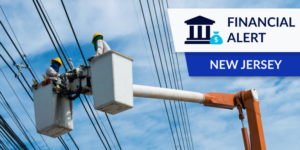
In a culmination of a number of setbacks for the company, New Jersey’s Semper Utilities, LLC, filed for Chapter 11 bankruptcy on February 11, 2022.
The company may owe as much as $10,487,680.80 according to its bankruptcy petition. Though a portion of this is disputed, the undisputed total is still a significant $6,447,267.53.
Construction nonpayment — and the lien claims and legal actions that surround it — can be a good indicator of financial problems for a company. Rather than being a simple issue of financial issues putting the company in the position to need restructuring, there’s a fairly clear path to trace that shows where nonpayment put Semper in this position.
The company was previously named in an involuntary Chapter 11 bankruptcy in December 2021 instigated by Edison Power Constructors, Inc. and three other petitioners. As per this petition, Semper owed $6,460,496 to its creditors.
This, in turn, followed an April 2021 lawsuit filed by Edison Power Constructors against Semper which alleged that the company was responsible for a total of $5,867,719 in nonpayment.
According to the lawsuit, Semper was contracted by Public Service Electric & Gas Co. for utility restoration services in Nassau County, New York following extreme weather events, after which Semper subcontracted Edison Power to assist.
However, Edison Power claimed that Semper had simply refused to pay despite repeated requests for them to do so, claiming “No reason exists for Semper’s nonpayment.”
This likely put Semper in a more difficult spot than if they had withheld payment in a different state: New York State has construction trust fund requirements meant to serve as an added layer of protection against nonpayment.
When companies receive money for construction work, they’re considered to be holding it in a trust for the benefit of contractors who need to be paid for their work on a project. If these funds are withheld, companies can be held responsible for diverting trust funds illegally on top of the threat of liens and other litigation, even after payment has been made.
The situation gets even more complicated for Semper, however. In another notable turn, a February 15, 2022, motion by additional parties is attempting to dismiss the Chapter 11 bankruptcy cases against the company, claiming that the original filing parties did not have the authority to file for bankruptcy.
The company’s struggle with nonpayment and other legal problems serves as a good example of why it can be important to prequalify contractors, even from a subcontractor’s point of view.
“It takes a long time to get paid in construction…Sometimes, you’ll need to step out of your circle to keep the cash flowing,” notes construction lawyer Alex Benarroche. “And, for a business that wants to grow, working with new customers is mandatory. Contractor prequalification is a great way to assess the risk of taking on a new project outside of your comfort zone.”
Good prequalification involves checking elements such as a company’s business information and background, payment history, and safety history — however, the process optimally should extend well into the job itself
“Keep in mind, though, contractor or subcontractor prequalification before the job isn’t enough,” Benarroche adds. “Rather, qualification should be an ongoing process. Even the most qualified contractors or subs can run into risks and liabilities.”
“A useful practice is to periodically ‘re-qualify’ or perform evaluations. This is mutually beneficial because it maintains peace of mind from the owner/management side but also forces the contractors and subcontractors to regularly assess their own financial liabilities.”
View your contractor’s score
Search Levelset’s Contractor Profiles to view recent payment problems, liens, subcontractor reviews, and more.